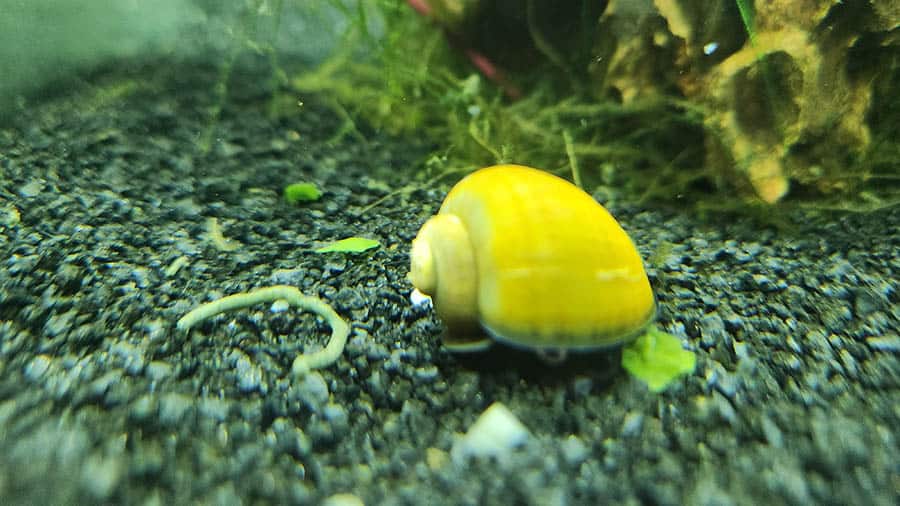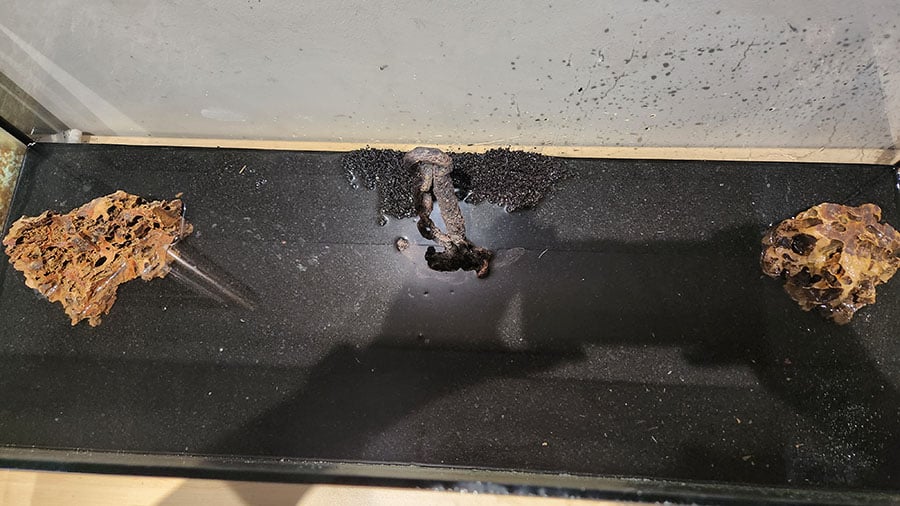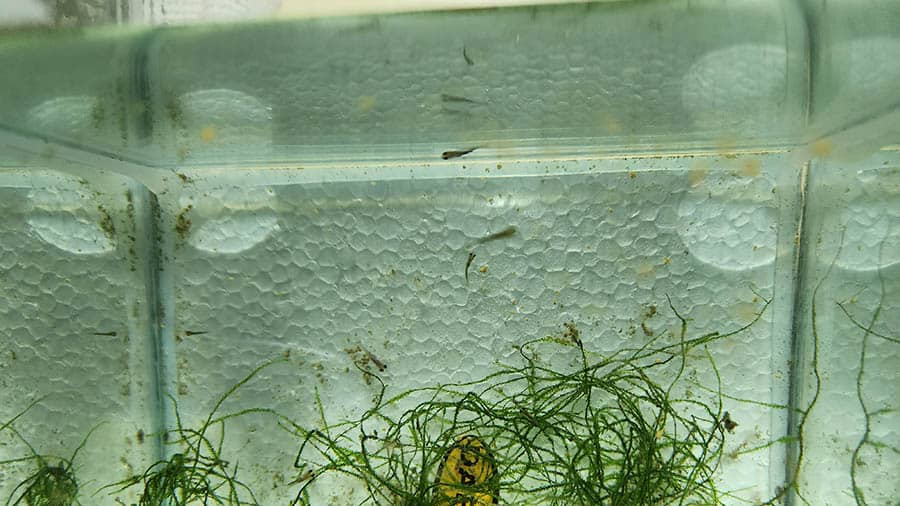What Substrate Is Best For Goldfish?
The pros of having substrate in your goldfish tank is that it holds good bacteria in your tank. Goldfish enjoy scavenging the substrate, which provides them with stimulation. The other use of substrate in a tank helps keep plants in place.
Sand has worked best for me. I have tried gravel and had some bad experiences, and it took longer to clean. Below, I will elaborate on the pros and cons of each substrate choice so you can make a better decision.

Using Sand As Your Substrate
If you choose sand, follow the cleaning instructions before using it in your tank. I purchased the Crystal Black Aquarium Sand, which is coarser than pool filter sand (finer). I rinsed my sand thoroughly before adding it to my tank, as the black pigment would turn the water black.
I used my dedicated fish bucket, poured one bag of sand at a time, added water, used my hand to mix the sand around in the water, and rinsed about three times or until the water was clear. This helped, as I did smaller amounts of sand at a time. My tank water was crystal clear when I added it.
You can use pool filter sand if you choose to, but please never use normal potting sand, as there could be something in it that would cause harm to your fish. Using sand in your tank is faster to clean, as the fish poop stays on top of the sand, making it easy to suck up and get rid of while doing water changes.

Using Gravel As your Substrate
Gravel is a widespread choice for people who start this hobby, and many starter tanks come with gravel. I used gravel when I started keeping fish, and it worked fine. The only problem I had with gravel is that food and fish poop get trapped inside the gravel, and using a vacuum to try and suck up all the waste takes longer.
I also found that algae would attach to my lighter-colored gravel, making it appear dirty. You could probably combat this by using a darker mix of gravel, or some people prefer the look as it would look closer to what you see happening in nature.
The other issue I had was one of my Black Moors getting a piece of gravel stuck in his mouth. If I hadn’t seen it in time and dislodged it from his mouth, he could have died. This only happened once, but it was enough for me to change the tank substrate.
I also have to mention that due to the gaps within the gravel, plants grow roots much faster than in normal sand. I suspect this is because oxygen and water flow through the substrate better than a more dense substrate.

Using Mixed Substrate Or Bigger Rocks
Mix sand and gravel to create a more substantial effect on your substrate. When I say mix, I mean having a sandy pathway in your tank where the rest of your planted areas are gravel (for example). As mentioned, plant roots grow better in gravel, so it might be wise to stick to gravel in the planted areas and use sand for the rest of your tank bottom.
Make sure when you are cleaning your substrate with your vacuum that you don’t mix the two types, as the sand with its smaller particles will fall into the gravel and might take away from the effect you were trying to create.
I suggest you avoid using large rocks as your tank bottom feature. Not only do you run a higher risk of cracks or damage to your tank by placing the rocks directly on the glass, but you will also struggle to keep your tank clean as the vacuum will not reach all the spaces between the rocks.
You want to remove the old fish waste and food because it can influence your water levels. You don’t want your fish living in an environment where they are swimming in their waste. High levels of ammonia will cause your fish to become sick and die.
I also want to mention the option of carpeting the floor of your tank. This has a beautiful aesthetic, but unfortunately, as I have experienced repeatedly, goldfish really like to eat plants.
Carpeting the floor of your tank might be a great idea if you have another type of fish. Still, unfortunately, we goldfish keepers most likely will never be able to maintain a beautiful carpeted tank floor.

Using No Substrate (Bare Bottom)
The minimalist approach is a spotless and bare way to go about fishkeeping. Some people love their basic tanks, but unfortunately, I would never be able to do it to my ever-sifting through everything fish babies. It gives them something to do and stimulates them while they go about their day.
However, I suggest this bare-bottom option when hatching fry and breeding. The bare bottom helps keep the tank clean, and you don’t have to worry about their health while maintaining the daily water changes and removing food they didn’t eat.
